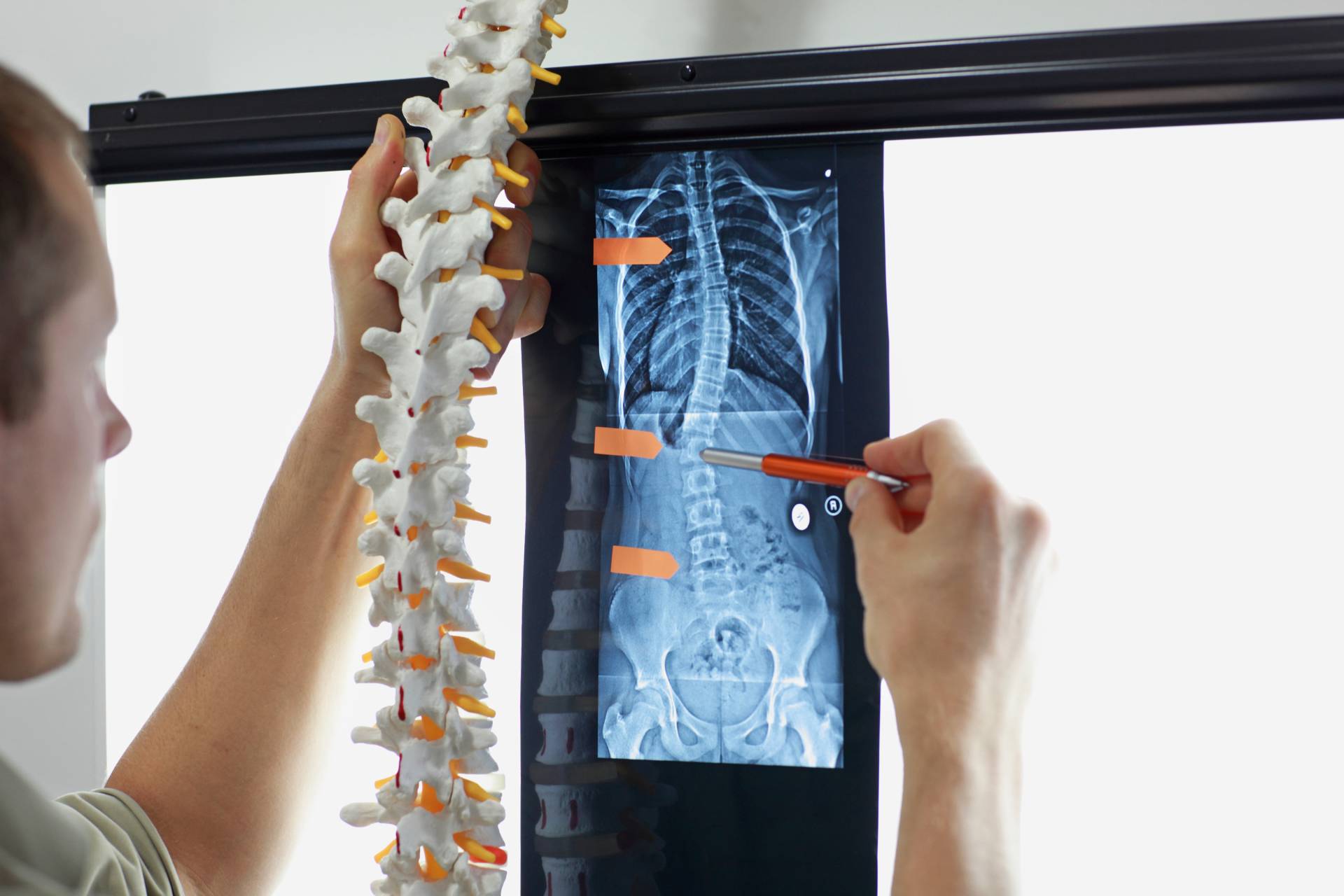Adolescent Idiopathic Scoliosis: Does it really go away?

Adolescent idiopathic scoliosis is one of the musculoskeletal disorders that result in an abnormal curvature of the spine. It is more commonly seen in children and adolescents between the ages of 10 to 18 years. In this illness, the spine instead of growing straight usually grow in an “s” shaped or “elongated “c” shaped pattern. Of all types of scoliosis, 80 % of the scoliosis is found to be adolescent idiopathic scoliosis, the cause for which remains unknown, as the name suggests.
Signs and Symptoms of Scoliosis: How to identify?
When it comes to identifying adolescent idiopathic scoliosis, the first thing to look for is an abnormal curvature in the spine leading to the leaning of the back towards the left or right side. A teen's body leaning to one side is a typical sign of scoliosis. Another thing to keep in mind is that some teenagers have one shoulder that sits higher or has a shoulder blade that extends out more than the other. There is often a prominent rib cage which accentuates when the patient bends forwards.
Finally, there are times when scoliosis is undetectable, especially when the curve has not reached a sizeable value. As a result, parents must accompany their teenagers to their normal check-ups while a scoliosis assessment is performed in the meanwhile.
Diagnosing Scoliosis
The best strategy for a parent who suspects their kid of scoliosis is to make an appointment with a spine specialist. The medical expert will keep track of your medical history and evaluate it. To see if scoliosis runs in the family, the health care practitioner will ask questions about family health. With the help of your medical history, signs, symptoms, and physical examination the expert will come to a final diagnosis. The expert will also define the severity of idiopathic scoliosis based on the degree of the scoliosis curve (Cobb angle). Based on severity and Cobb angle adolescent idiopathic scoliosis can be divided into the following types:
- Mild Adolescent Idiopathic Scoliosis - A curve of less than 25 degrees,
- Moderate Adolescent Idiopathic Scoliosis - A curve that is between 25 to 40 degree
- Severe Adolescent Idiopathic Scoliosis - The curve is more than 50 degrees.
Treatment
Treatment for adolescent idiopathic scoliosis is divided into three groups based on the risk of curve progression.
- Observation
- Bracing
- Surgery
- Observation
Your spine expert may advise you on a wait and watch approach in which he will just observe over a period of time and if needed will decide on a treatment approach. This approach is usually advised when the curve is either less than 25 degrees in the growing stage or less than 40 degrees where the growth is already complete.
- Bracing
A scoliosis brace is a rigid plastic jacket that is worn around the trunk from beneath the arms to the hips to assist prevent the curvature from worsening. It is advised for patients with a curvature ranging from 25 - 40 degrees in their developing stage. Bracing is a non-surgical procedure that may avoid the need for surgery. While most scoliosis patients simply require monitoring, bracing can help prevent the curvature from progressing further. This is done by correcting the curvature while the patient is in the brace, preventing the curve from progressing over time. The brace must be worn for at least 12-13 hours per day to be effective.
- Surgical Treatment
Surgical therapy is indicated for patients whose curves are larger than 45 degrees while still developing or greater than 50 degrees after growth has halted. The main aim of surgical therapy is to avoid curve advancement and achieve some degree of curve reduction. There are many approaches for surgical treatment, your spine surgeon will discuss them all with you before moving forward. A metal implant is used to straighten the spine and retain this position until the operated spine segments fuse together. After the surgical procedure, the patient can resume normal daily activities and return to school in 3-4 weeks.
Alternative Treatment
These alternative treatment approaches are not advised for treating the abnormal curvature of the spine. However, these additional therapies have some physical benefits in the symptoms reductions and core strengthening. These alternative treatment strategies include:
- Chiropractic medicine
- Physical therapy
- Yoga
Living with Scoliosis
Adolescent idiopathic scoliosis generally does not cause symptoms that would limit the physical activity of the patient. People with mild scoliosis are kept under observation allowing them all physical activities without any limitation or risk of damage. All physical activities are permitted for patients who are having brace treatment when the brace is not worn. Patients undergoing surgical treatment will receive instructions from their surgeon about what activities are permitted following therapy.
Does Adolescent Idiopathic Scoliosis Go Away?
Although scoliosis is often a progressive disease, once a person is diagnosed with adolescent idiopathic scoliosis, it is a condition they will have their whole life. Spine surgeons are specialized in the management of these illnesses and they keep a regular check on the progression of the disease. Depending on the stage and severity of the diseases they may decide the treatment approach to be followed. Regular checks and interventions provide a balance and preserve the overall health and functioning of the spine. When you take the necessary steps, you define the path for the illness and prevent it from worsening.






